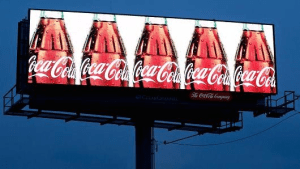Brand Awareness Box: The Untapped Neurosensory Advantage
While most marketers chase the next digital trend, the real breakthrough in emotional brand recall may be sitting in your customer’s hands—literally. The brand awareness box, when optimized for texture and scent, becomes more than packaging; it becomes a multisensory storytelling device.
Traditional ads like banner pop-ups or even digital OOH lose impact the second they’re out of view. But when someone opens a brand awareness box, their tactile and olfactory senses are activated—two memory-rich pathways that digital formats can’t touch.
If you’re aiming to create a lasting brand impression, especially in local, high-retention environments like restaurants, coffee shops, or home delivery spaces, there’s no tool more effective than a well-designed brand awareness box.
The Neuroscience Behind the Brand Awareness Box
To understand the power of scent and touch in branding, consider how the brain processes memory. According to the Journal of Consumer Psychology, scent has a direct route to the limbic system—the emotional center of the brain. Meanwhile, texture plays a role in shaping perceived value and quality.
A brand awareness box that includes scented elements or materials with surprising textures (velvet finishes, embossed logos, matte wraps) can drastically increase both recall and emotional association. In fact, a study by the Sense of Smell Institute found that people recall scents with 65% accuracy after a year, compared to only 50% of visuals after three months.
Brand Awareness Box vs. Pizza Box Ads: Why This Format Wins
You might be wondering—why not just rely on tried-and-true pizza box ads or table tents at a local joint?
While pizza box advertising offers large-scale reach in hyperlocal settings, the brand awareness box allows for curated, high-impact messaging with layers of physical engagement. A pizza box ad is seen once, typically during mealtime. A brand awareness box is touched, opened, examined, and often saved—extending its lifespan and effectiveness.
Of course, combining both formats—say, a pizza box advertisement with a QR code that leads to a free awareness box offer—amplifies reach and depth.
Texture Tactics in the Brand Awareness Box
Every touchpoint in a brand awareness box is an opportunity for sensory influence:
Embossed Logos: Elevate the perceived quality.
Textured Inserts: Simulate the feel of the product (e.g., denim swatch for apparel brands).
Matte vs. Gloss: Matte feels more “premium,” gloss is more “mass-market.”
Soft Touch Coatings: Trigger subconscious comfort associations.
These tactile choices aren’t just aesthetic—they send signals. When someone touches a soft-touch-coated insert, their brain associates that comfort with your brand.
Scents That Sell: Olfactory Branding in a Brand Awareness Box
The power of scent in a brand awareness box is rooted in its primal impact.
A whiff of fresh coffee, lavender, or leather can bring back vivid memories—and brands are now engineering this intentionally. Some examples:
A coffee chain includes a branded coffee-scented sachet.
A fitness apparel company integrates eucalyptus-scented tissue wrap for an energizing effect.
A luxury car brand embeds its signature leather fragrance into its loyalty box.
These aren’t gimmicks—they’re brand-building triggers. Each scent strengthens mental associations and emotional alignment with your brand.
QR Codes: Measuring the Impact of Multisensory Brand Awareness Boxes
The ROI of a brand awareness box isn’t theoretical—it’s measurable. Smart marketers are embedding QR codes on coasters, product cards, or the box flap itself to guide consumers to:
Sign-up offers
Product trial surveys
Social sharing moments
Store locators or map triggers
QRs turn your tactile experience into a data-rich performance funnel. And yes, pizza box ads can also benefit from this integration, but the brand awareness box offers more deliberate engagement and scanning behavior.
Pizza Box Advertising Meets Brand Awareness Boxes
Here’s where Adzze’s media formats shine. Consider blending the brand awareness box strategy with pizza box advertising:
Partner with local pizzerias to include miniature awareness kits inside boxes.
Wrap the pizza box exterior with a QR code linked to a reward box request.
Use napkins or sleeves inside pizza deliveries to hint at deeper brand storytelling.
It’s tactile marketing stacked—and it turns dinner into a brand engagement platform.
Case Study: Wellness Brand Drives 48% Uplift with Scented Box Drop
A wellness supplement brand partnered with Adzze to distribute 10,000 brand awareness boxes across boutique gyms and juice bars. Each box featured:
A chamomile scent insert (stress relief association)
Matte-printed tips card
QR code offering a 7-day free trial
Result: 48% more redemptions compared to their last digital-only launch. The emotional cues—calming scent, comfortable touch—created a trust bridge before the first purchase.
Why Now Is the Time for a Brand Awareness Box Strategy
As digital noise increases, physical media offers an antidote: memorability. The brand awareness box stands apart not just in format but in function. It engages the senses, builds trust, and delivers metrics.
Whether you’re launching a local product or elevating your customer loyalty program, the brand awareness box gives you a distinct advantage over flat, forgettable ads—yes, even the best-designed pizza box ad.
Conclusion: Brand Awareness Box Marketing Builds Deeper Bonds
In a world obsessed with digital targeting, marketers can’t afford to overlook the human side of engagement. The brand awareness box—when layered with texture and scent—creates an emotional imprint that no banner, billboard, or pre-roll video can match.
Don’t just deliver a message. Deliver a memory. Make it tangible. Make it multisensory. Make it unforgettable.
https://youtube.com/shorts/uCTW75Rhn_U?si=zq1dvwZPTeT3yvg2






